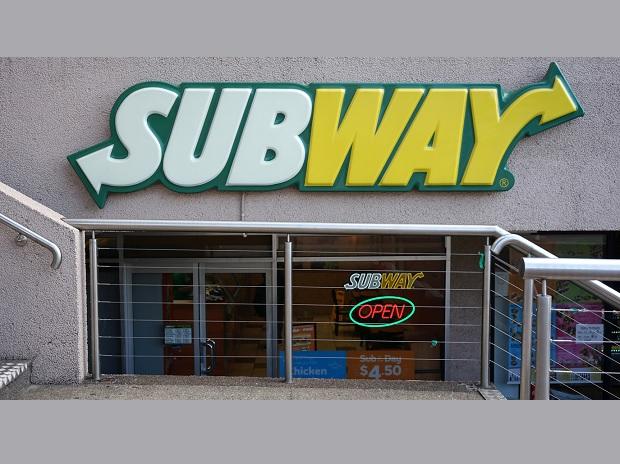Subway’s new owner faces tough decisions on chain’s massive size in US
By Daniela Sirtori-Cortina
After winning the competition for Subway, Roark Capital Group gets a company that has made recent strides in turning its business around. But it’s inheriting a stubborn problem: the sandwich chain’s massive US footprint.
“Subway still has over 7,000 more domestic locations than McDonalds,” said Kevin Schimpf, director of industry research and insights at Technomic. “I’d expect them to keep chiseling away at their store network until they can boost their average unit volumes to a level that is more attractive to stakeholders.”
Alicia Miller, co-founder of consulting firm Catalyst Insight Group, said that Subway still has room to grow abroad but has too many domestic locations. Subway plans to open an additional 23,000 restaurants globally in the next few years, according to a statement, although most of that growth will be outside the US.
A Subway spokeswoman told Bloomberg News that management will remain the same under the new owners. The company on Aug. 16 announced some changes to senior positions, including a new head of North America.
Subway, which doesn’t operate the restaurants itself, spent decades saturating the US with sandwich shops, in part by making it relatively easy for franchisees to buy in. This sparked rapid expansion, but also attracted smaller owners with limited capital.
The company experienced revenue growth for some time, but then the cannibalization began. And while longstanding deals like the $5 footlong subs brought customers in the door, they eventually weren’t profitable for operators. Increased competition and negative press also took a toll.
Lately, the company has been focused on attracting larger operators with more resources. These well-capitalized franchisees have an easier time investing to modernize store designs and installing new technology. Subway signed five such agreements in April.
But Subway has yet to attract the most salient industry players, according to Catalysts’ Miller, a sign the turnaround isn’t quite done. This means the company will likely have to continue closing underperforming locations as it seeks to clinch new deals with wealthier franchisees.
“Subway is focused on strategic brand growth that includes ensuring restaurants are in the right location, right format and right image, working with the right franchisees who have operating expertise and passion for the Subway brand,” the company said in an emailed statement.
A Roark representative didn’t respond for a request for comment.
Self-Run Stores?
Under Roark, it’s possible that Subway will buy back some franchisees and run the locations itself to demonstrate how the business can be improved, said Aaron Allen, CEO at restaurant consulting firm Aaron Allen & Associates. The chain will also likely continue to focus on making its menu more exciting, along with boosting its to-go business, he said.
With mom-and-pop owners still running many of the chain’s restaurants, this could be a challenge.
“The biggest issue is going to be the franchisee base,” Allen said. “Whatever your plan is, you’ve got to get these franchisees bought in.”
Roark, which manages $37 billion in assets, has deep experience in the restaurant industry — and specifically with franchised chains. It controls the parent company of rival sandwich chain Jimmy John’s, which also operates via franchisees. Other holdings include Arby’s, Buffalo Wild Wings and Dunkin’.
Subway didn’t disclose the deal’s terms. The agreement is valued at roughly $9.55 billion, Bloomberg News reported. Roark will pay about $9 billion upfront, with the remainder coming in future so-called earnout payments, according to people with knowledge of the matter.
“What that tells me is they like the plan. They like where management is telling them the business is going to go,” said Chas Hermann, a restaurant industry consultant. “But they’re not so sure that they’re going to just sign off carte blanche.”
